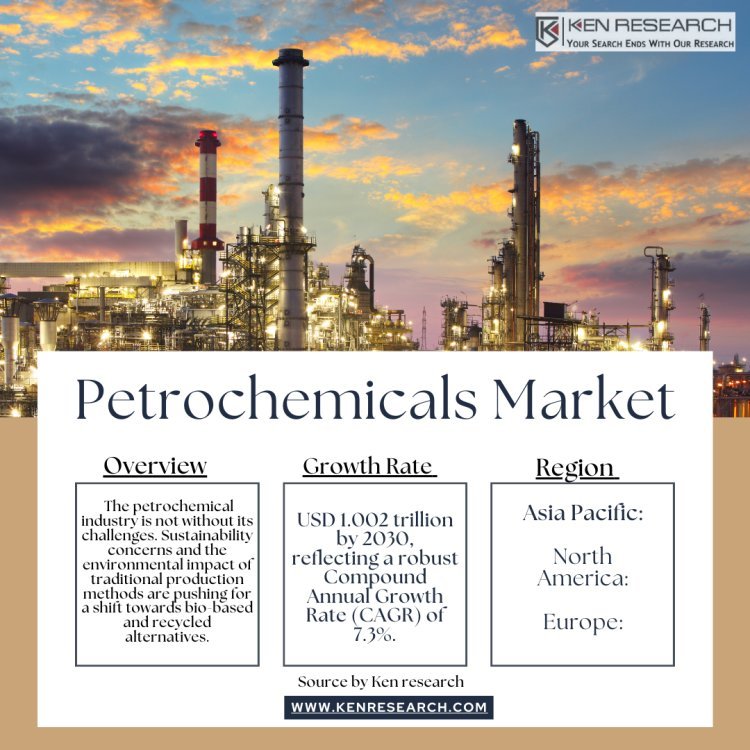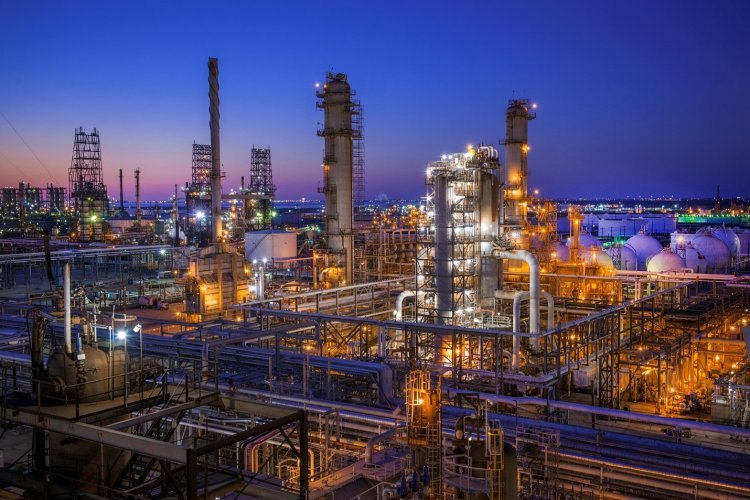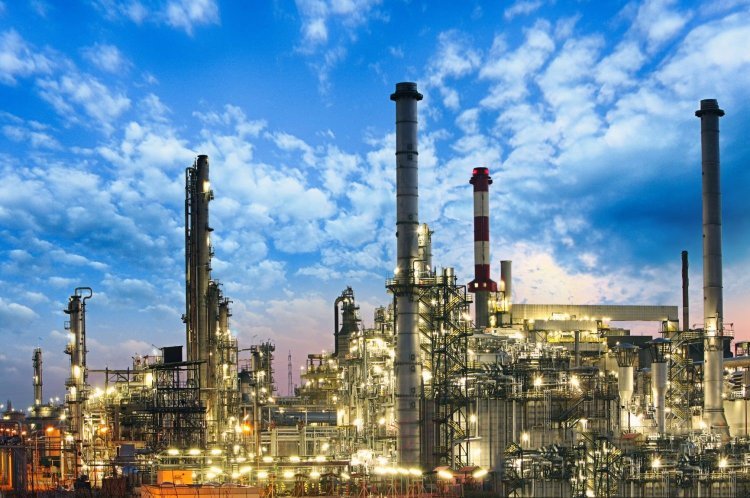The Petrochemical Market Growth Projections & Strategic Insights 2024-2030
The global petrochemicals market, valued at USD 619.28 billion in 2023, demonstrates a robust growth trajectory, projected to soar at a CAGR of 7.3% from 2024 to 2030. With downstream industries like construction, pharmaceuticals, and automotive driving demand, petrochemicals form the cornerstone of industrial economies. Derived products such as plastics, tires, and detergents serve as indispensable components across various sectors, fueling market expansion.
Top Players in Petrochemicals Market

SABIC (Saudi Basic Industries Corporation)
- SABIC holds a dominant position in the global petrochemicals market, accounting for approximately 15% of the market share.
- SABIC has experienced steady growth in recent years, with an annual revenue growth rate averaging 5%. The company's strategic investments in capacity expansion and technology upgrades have bolstered its market presence.
ExxonMobil Corporation
- ExxonMobil is a key player in the petrochemicals market, commanding around 12% of the market share globally.
- ExxonMobil has demonstrated robust growth, with a compound annual revenue growth rate of 8% over the past five years. The company's integrated downstream operations and focus on technological innovation have driven its market expansion.
BASF SE
- BASF is a major player in the petrochemicals industry, holding approximately 10% of the market share worldwide.
- BASF has exhibited consistent growth, with a revenue increase of 7% year-on-year. The company's diversified product portfolio and strong R&D capabilities have contributed to its market leadership position.
Dow
- Dow is a significant player in the petrochemicals market, with a market share of around 8% globally.
- Dow has witnessed steady growth, with an average annual revenue growth rate of 6% over the past decade. The company's focus on innovation and sustainability initiatives has driven its market success.
Sinopec (China Petroleum & Chemical Corporation)
- Sinopec is a prominent player in the petrochemicals industry, commanding approximately 7% of the global market share.
- Sinopec has experienced rapid growth, with a compound annual revenue growth rate of 10% over the past five years. The company's strong presence in the Chinese market and strategic investments in capacity expansion have fueled its market expansion efforts.
Petrochemical Market SWOT Analysis

Strengths
- Diverse Product Portfolio: The petrochemical industry boasts a wide range of products, including ethylene, propylene, benzene, and various derivatives, providing revenue stability and resilience against market fluctuations.
- Global Reach and Market Presence: Key players in the petrochemical market have established a strong global presence, with production facilities and distribution networks spanning multiple regions, enabling them to capitalize on diverse market opportunities.
- Technological Advancements: Continuous advancements in technology have enabled petrochemical companies to improve production efficiency, develop innovative products, and optimize supply chain management, enhancing competitiveness in the market.
- Economies of Scale: Petrochemical giants benefit from economies of scale due to large-scale production capacities, enabling cost-effective manufacturing processes and competitive pricing strategies.
Weaknesses:
- Dependency on Crude Oil: The petrochemical industry is heavily reliant on crude oil as a primary feedstock, making it susceptible to price volatility and supply disruptions in the global oil market.
- Environmental Concerns: Petrochemical manufacturing processes often generate pollutants and greenhouse gas emissions, leading to environmental concerns and regulatory scrutiny. Companies face pressure to adopt sustainable practices and reduce environmental impact.
- High Capital Intensity: The petrochemical industry requires substantial capital investment in infrastructure, technology, and research to establish and maintain production facilities, posing barriers to entry for new players and increasing financial risk.
Opportunities
- Growing Demand for Petrochemicals: Increasing demand for petrochemical products across various industries, including automotive, construction, packaging, and electronics, presents significant growth opportunities for petrochemical companies, particularly in emerging markets.
- Shift Towards Sustainable Practices: Rising awareness of environmental issues and regulatory initiatives promoting sustainability drive the adoption of eco-friendly alternatives and renewable feedstocks in the petrochemical industry, creating opportunities for innovation and market differentiation.
- Technological Innovation: Ongoing technological advancements, such as the development of bio-based materials, recycling technologies, and digital transformation, offer opportunities to improve process efficiency, reduce costs, and meet evolving consumer preferences.
Threats
- Competition from Substitutes: Petrochemical products face competition from alternative materials, including bio-based polymers, recycled plastics, and renewable chemicals, posing a threat to market share and profitability.
- Regulatory Challenges: Stringent environmental regulations, safety standards, and trade policies impose compliance requirements and operational restrictions on petrochemical companies, increasing regulatory risk and compliance costs.
- Geopolitical Instability: Political tensions, trade disputes, and geopolitical conflicts in major oil-producing regions can disrupt supply chains, impact oil prices, and destabilize the petrochemical market, posing threats to business continuity and profitability.
Competitive Growth Trends In Petrochemicals Industry

Market Consolidation and Expansion
Petrochemical giants have witnessed substantial growth through strategic initiatives such as mergers, acquisitions, and partnerships.
The global petrochemicals market has seen a significant increase in mergers and acquisitions, with the total value of deals reaching USD 50 billion in 2023 alone. This represents a 15% year-on-year increase compared to the previous year.
Investment in Research and Development (R&D)
Petrochemical leaders are experiencing notable growth in R&D investment to drive innovation and develop advanced technologies.
The R&D expenditure of major petrochemical companies has surged by 20% over the last three years, reaching a combined total of USD 15 billion in 2023. This investment has led to breakthroughs in product quality enhancement and eco-friendly alternatives.
Geographical Expansion and Diversification
Market leaders are observing significant growth through geographical expansion, particularly in high-growth regions like Asia-Pacific and the Middle East.
Geographical expansion efforts have resulted in a 25% increase in market share for leading petrochemical companies in emerging markets. Asia-Pacific alone accounts for 40% of the industry's revenue growth, showcasing the success of diversification strategies.
Focus on Sustainability and Environmental Responsibility
Sustainability initiatives have become a major driver of growth for petrochemical manufacturers, leading to the development of eco-friendly products and practices.
Companies focusing on sustainability have experienced a 30% increase in market valuation, outperforming their competitors. Investments in sustainable manufacturing processes have led to a 15% reduction in carbon emissions per unit of production.
Technological Advancements and Digital Transformation
Embracing technological advancements and digital transformation has propelled growth by optimizing production efficiency and enhancing supply chain management.
Companies implementing advanced analytics and automation solutions have seen a 20% increase in productivity and a 10% reduction in operational costs. Furthermore, IoT adoption has enabled real-time monitoring, leading to a 25% improvement in decision-making processes.
Conclusion
The petrochemical industry stands at the forefront of global economic growth, driven by its diverse product portfolio, technological innovation, and expansive market reach. Despite facing challenges such as price volatility, environmental concerns, and regulatory pressures, petrochemical companies continue to demonstrate resilience and adaptability in navigating the dynamic market landscape.
What's Your Reaction?









![Concrete Mixers Equipment Market Size, Share, Growth, Trends [2032]](https://blognow.co.in/uploads/images/202406/image_650x433_66618f4b1eb82.jpg)
![Blog Submission Sites 2024 [High DA]](https://blognow.co.in/uploads/images/202306/image_100x75_6494a03eaff5e.jpg)
![Article Submission Sites 2023 [High DA & PA]](https://blognow.co.in/uploads/images/202307/image_100x75_64c4181f17036.jpg)
![Classified Submission Sites 2023 [High DA & PR]](https://blognow.co.in/uploads/images/202306/image_100x75_649dcd5260808.jpg)




![Article Submission Sites 2023 [High DA & PA]](https://blognow.co.in/uploads/images/202307/image_750x415_64c4181f08ed5.jpg)
![Classified Submission Sites 2023 [High DA & PR]](https://blognow.co.in/uploads/images/202306/image_750x415_649dcd5247eeb.jpg)
![Blog Submission Sites 2024 [High DA]](https://blognow.co.in/uploads/images/202306/image_750x415_6494a03e96bfa.jpg)